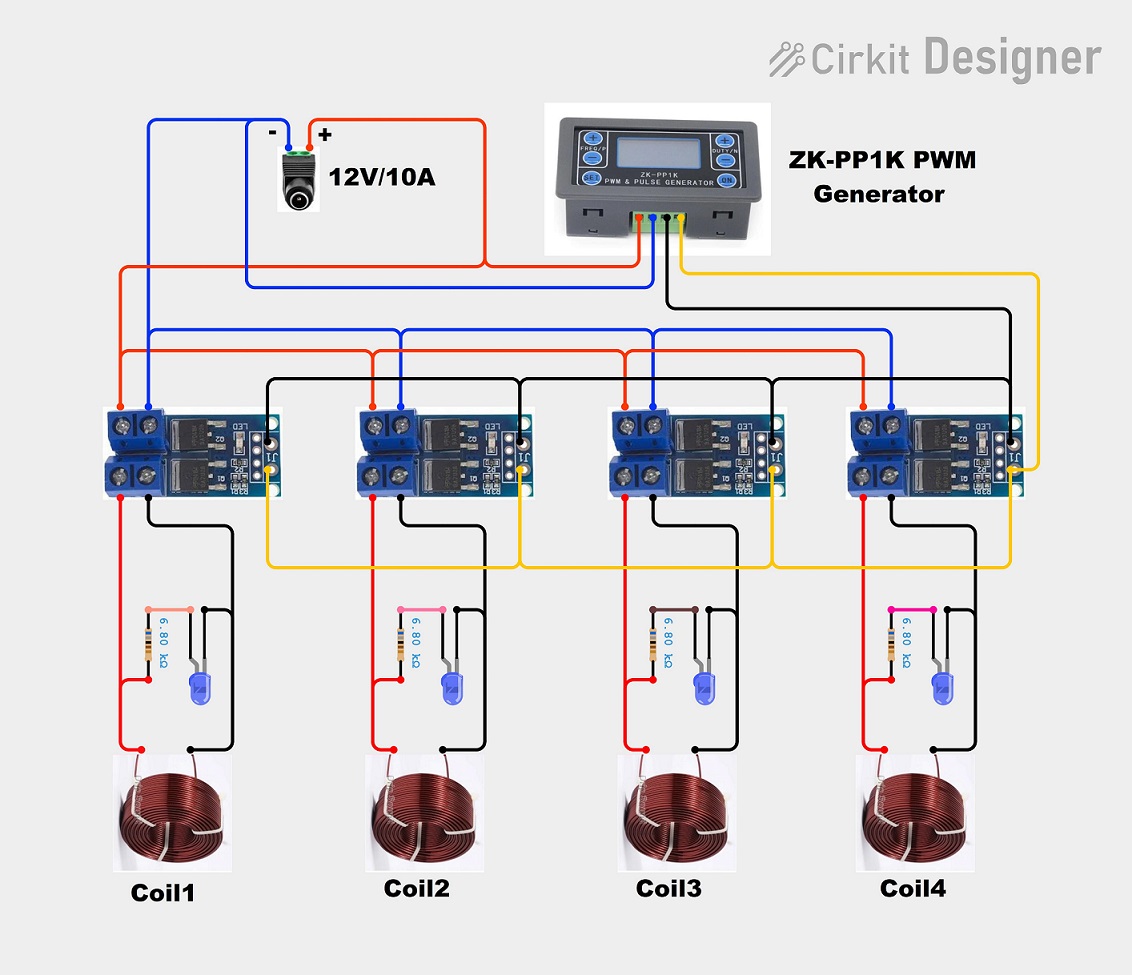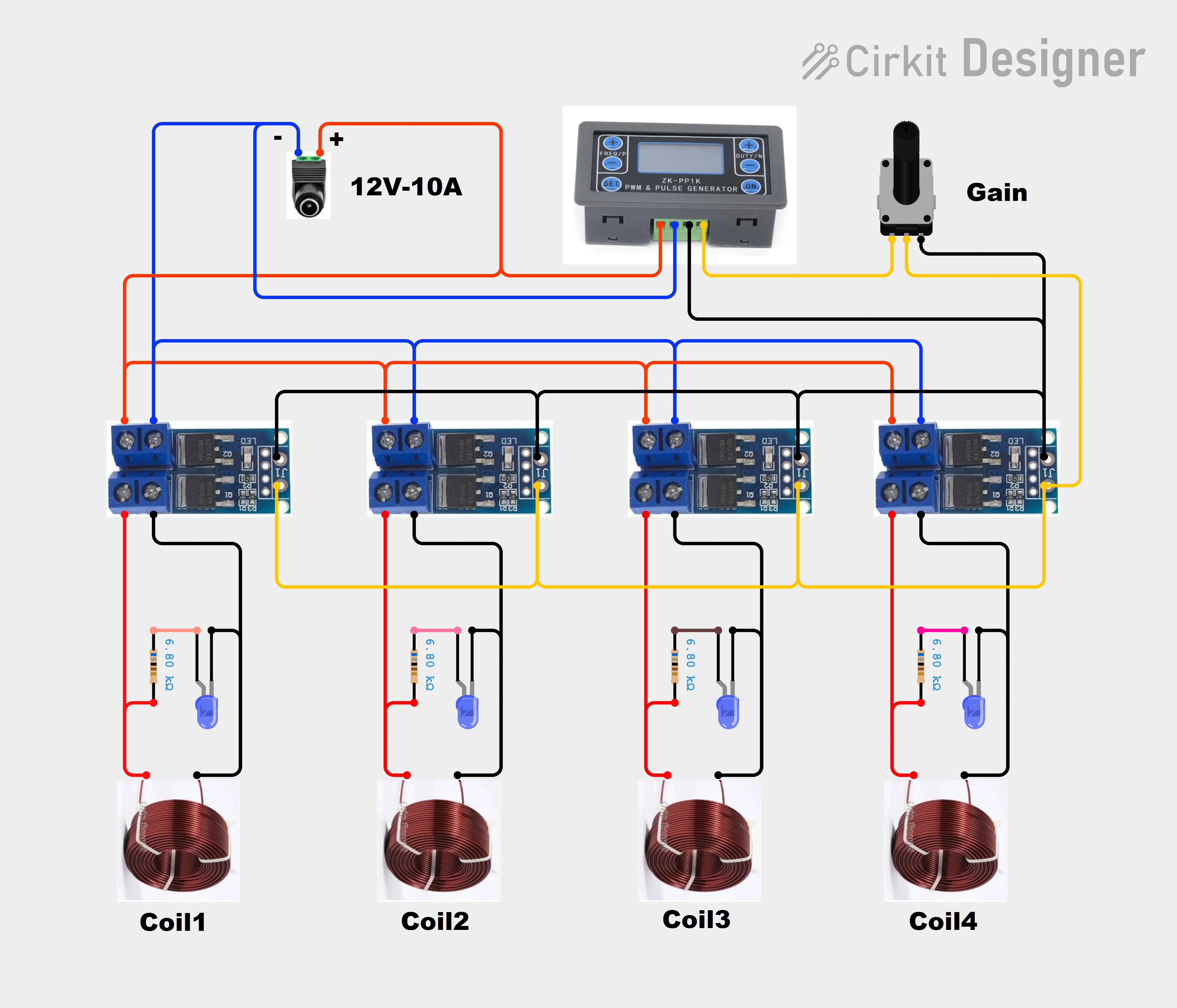PEMF therapy, or Pulsed Electromagnetic Field therapy, is a type of therapy that uses electromagnetic fields to promote health and well-being. PEMF therapy is based on the idea that electromagnetic fields can influence the cells and tissues in our bodies. Exposure to these pulsating fields can stimulate cellular activity, improve circulation, reduce inflammation, enhance tissue repair, and support overall healing processes. This therapy has been used for various purposes, including
In several of my previous videos, which you can view in the given Playlist are described several simple ways of making such devices.
This time I will describe a simple way to make a multi-channel PEMF device that is used to make a special therapeutic bed, or therapeutic chair.
In this case, the coils are placed inside the mattress, usually distributed in three to four different places, so that when we lie down or sit down, the whole body is exposed to magnetic radiation.
The device is very simple to build, and contains components that are easily available online and are also very inexpensive. The electronic part without coils and power supply costs about $10 total. I used ready-made modules for construction, so it can be made relatively easily by builders who do not have extensive knowledge in this area.
The device contains several components
The modules are interconnected with a conductor with a diameter of 1.5 mm or more, due to the large current that passes through them, while the diameter of the wire for the pulsating signal that is brought to their inputs is not important. I am using a 12V/4A power supply for this demonstration because I am only connecting one coil at a time. In real conditions, all four channels would be used, and it is cheaper and more practical to use a PC power supply.
At the output of each channel, I placed an LED diode that signals whether the channel is functioning. These diodes can be freely omitted. In the appendix at the end you can see that there are two similar circuits. In one, a potentiometer has been added, which can be used to continuously regulate the flux from zero to maximum. In my practical device, I have omitted the potentiometer for simplicity, and the intensity of the magnetic field can be partially changed by changing the duty cycle in the range of 5 to 30 percent. Otherwise, the standard value of the duty cycle should be around 10 percent.
I would like to suggest a very important note. Namely, very often on my channel I receive requests for advice on how to make a PEMF device that would output a very strong magnetic flux of 200 Gauss and much more. According to NASA's extensive research in this therapeutic method, the best results are obtained at magnetic flux strengths in the range of 0.5 to 4 Gauss. By increasing the strength of the flux, the effect of the therapy remains unchanged. So the rule "stronger magnetic field - stronger therapy" does not apply here. In this device, the magnetic flux strength is between 10 and 20 Gauss per channel, which is more than enough.
Also various "Exotic" coil shapes with "Magical" properties are definitely a scam and avoid even reading about them at all.
I still can't believe that they are sold at fantastic high prices. Unfortunately, it is a fact that there is a great demand for this type of coils, but only by people who do not understand the way this therapy works. Sellers invent countless silly theories to try to convince you of the effectiveness of their product.
We can test the functionality of this device, as well as other such devices, using an ordinary magnet. If we bring the magnet closer to the coil and if the device works, we should feel vibrations with a frequency set by the signal generator module.
And now a few sentences about making the coils. Coils should meet several conditions:
- The ohmic resistance of the coil (that is the resistance value measured with a standard ohmmeter) should be 4 Ohms or more. At higher resistance, the field is weaker and vice versa.
- The diameter of the wire with which the coil is wound should be greater than 0.5mm (cross-sectional area 0.2mm^2).
- The inductance of the coil is not critical and should be in the range of approximately 10 to 40 mH
- The dimensions of the coil are arbitrary:
A coil with a smaller diameter gives a stronger magnetic field, but over a smaller area, and a coil with a larger cross-section gives a weaker magnetic field over a larger area.
- You can easily make the necessary calculations for sizing the coil using online calculators, and for example I use the(given calculators) following:
https://www.omnicalculator.com/physics/wire-resistance
https://www.eeweb.com/tools/coil-inductance/
And finally, a short conclusion: I am not a medical person and I can not discuss the effect of the device, although I personally have many positive experiences from using it. I can also say with certainty that low frequency magnetic fields definitely have no negative impact, except in people where it is contraindicated(Pregnancy, Pacemakers, bleeding, Active tuberculosis, Malignancies). In fact, MRI imaging uses magnetic fields that are thousands of times stronger than those at PEMF and we all know that this imaging is completely harmless. It is always advisable to consult with a healthcare professional or a qualified practitioner before starting any new therapeutic intervention.
The device is installed in a suitable box made of PVC material with a thickness of 3 and 5 mm and covered with self-adhesive wallpaper














Comments
Please log in or sign up to comment.